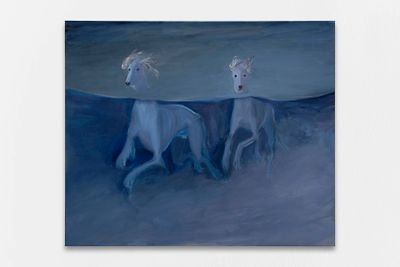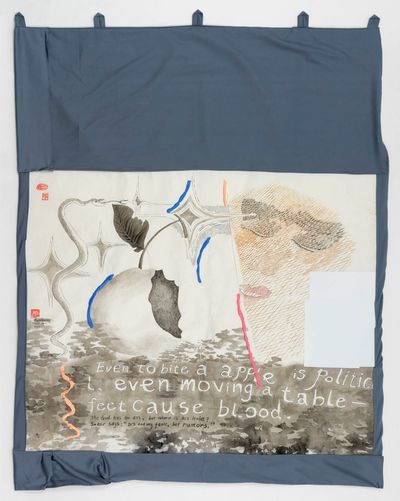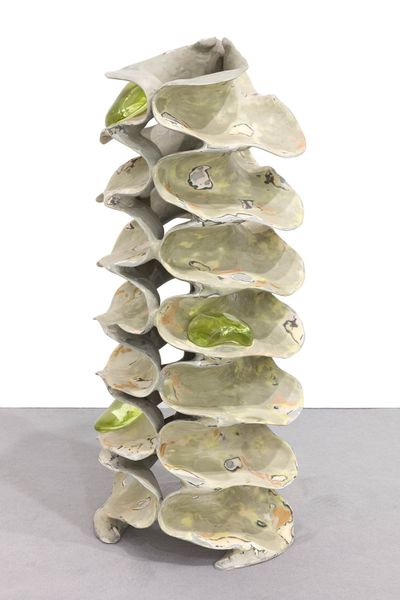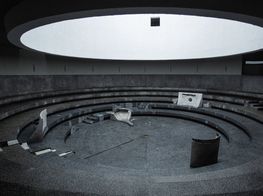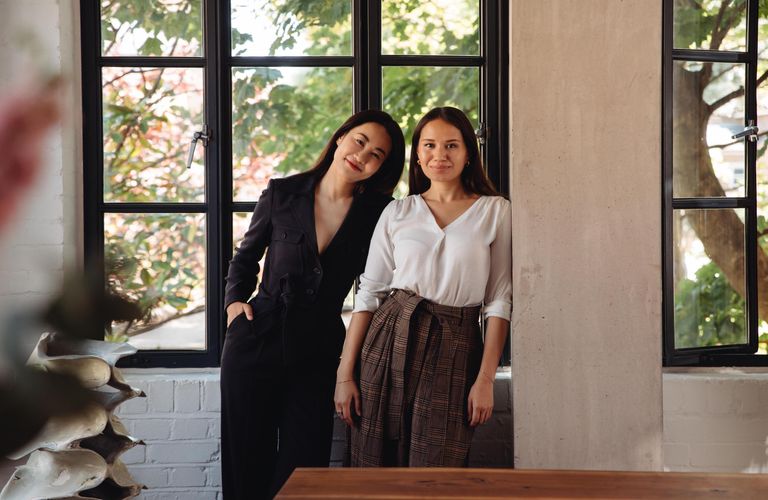
Power Patron Yan Du’s Asymmetry Art Foundation
Born in northern China, Yan Du studied painting at the Academy of Art and Design at Tsinghua University in Beijing before moving to London to complete an MBA. Since then, she has amassed a collection of over 500 works and, in 2019, established the Asymmetry Art Foundation to support curatorial researchers who speak Chinese or otherwise identify with Chinese heritage.
Asymmetry is directed by Michèle Ruo Yi Landolt, whom Du first met when she was working at a commercial gallery in Zurich. They later reconnected at The Courtauld Institute of Art, London, where Landolt was studying for her MA.
The foundation supports Chinese and Sinophone-identifying curators in myriad ways. They provide placements, research fellowships, and postdoctoral funding in partnership with Delfina Foundation, Whitechapel Gallery, Chisenhale Gallery, and Goldsmiths, University of London.
Additional initiatives include art publishing projects, a library residency, and plans to initiate exchanges with institutions in mainland China.
Recently, they organised a series of lectures at The Courtauld Institute of Art, which invited dialogue between writers, curators, and artists from the Chinese and Chinese-speaking community, and will conclude with an international symposium in autumn 2023.
The series of lectures launched with a conversation between Paris-based artist Xinyi Cheng and writer and curator Alvin Li, and subsequent participants included Xin Liu and Joni Zhu, as well as Lotus Laurie Kang and Xiaowen Zhu. The final lecture in the series featured Hong Kong artist Trevor Yeung and curator Qu Chang.
Du and Landolt shared Asymmetry's vision with Ocula Advisory, reflecting on its unique niche and flexible strategies for building a stronger Chinese-diaspora art community.
What about art appeals to you?
YD: Art is a mirror of myself and I see myself as more than one personality. I have different roles, I am changing all the time—a typical Sagittarius. So whether a dead artist or young artist, based on their lifestyle or personality, I see another reflection.
You have collected art for many years. Do you live with works like Sun Yuan and Peng Yu's Can't Help Myself (2022), the machine with a robotic arm that wipes blood-like liquid?
YD: No, that one is in storage. I am thinking of sending it to a museum one day. But that's why I buy installations; I want to support these artists to show in Western countries.
What motivated you to establish Asymmetry in 2019?
YD: I was thinking about what I could do with a foundation and what to focus on besides opening a museum, an exhibition, or just supporting artists. I felt like there was a gap in the curatorial ecosystem from China to here, so I started to work with curators.
Do you mean a lack of support for curators in China, or more generally?
YD: Internationally, but especially for curators in Asia or from Asian backgrounds. And many curators from Asian backgrounds live in London and travel around.
MRL: We are aware that this imbalance applies to a lot of regions when we speak of a global art world. As Yan mentions, herself being from mainland China, the area is our strong suit and speciality, and thus our focus.
But with myself joining, we realised it was not about borders, but bringing people together who identify with greater Sinophone cultures, heritage, and identities. When we look at global art workers, we still don't see many from these backgrounds, even among museum staff.
Do you feel like you're in a good position to address that imbalance?
YD: The time I spent in Hong Kong really helped. I've been working with many galleries, institutions, and museums like M+ for many years as an active patron and supporter. I'm starting to feel like I can take on this role of bridging the gap between East and West.
I have a strong pride in what we are doing. I think I need to do this.
It's a calling?
YD: Yes, I do feel like it is. I have the resources and budget for building a collection and supporting artists through this. I want to use this budget for the right things, beyond just buying.
I love collecting. It's my passion that I take seriously, and I want to do it for the rest of my life. But I don't see collecting as my main role or focus. My true calling is what I channel through the work of Asymmetry. It is where I feel I am making the most difference.
When did you get the idea of involving the Chinese diaspora?
YD: In the beginning, I didn't think about the geographical scope of the region, as I was stuck in Hong Kong, only about curators and Asia.
Through the process—the applications, meeting people—we realised that there are many Sinophone communities here. Michèle naturally has a close relationship with these communities. It's where she comes from.
MRL: With the pandemic and China being shut, we realised how many people now identify with the new diaspora and what it means. Previously, we could go back to visit or work on projects. But suddenly it wasn't so smooth.
In New York or America, Chinese-American communities are well established. In Europe, we felt like this wasn't the case. You had different agents in the art ecosystem: artists, gallerists, and writers. Somehow, everybody was in their own sphere.
With Asymmetry, it really felt like we were creating this community with a shared experience of not being able to return or visit.
Do you mostly support early career curators or established ones?
MRL: We decide with our partner institution depending on the nature of the initiative. Probably not right after graduation, more mid-career or early mid-career.
YD: Our programme is also a circuit. We keep in touch after curators finish their placements, and keep open the possibility of ongoing collaborations through publications or exhibitions.
How do you select curatorial fellows?
MRL: Besides their trajectory, we pay attention to their research interests. We look at individual paths—how much they can benefit from the fellowship, what they could still learn, whether their skill sets match the institution, and if they fit within the wider network. The decisions are made jointly with the partner institution of each initiative.
What is the next stage?
MRL: We've grown in the last two years, partnering with five institutions. We initially didn't want to open a space for another two or three years. We thought being a mediator in the cloud was enough.
But after a year, we realised support is so essential and space in London is scarce. We opened our multipurpose space in East London where the growing team now works, and fellows can hotdesk. We want to make something of that space and establish a more rounded and serious public programme.
The backbone of our foundation is, of course, the fellowships. At all times we host five to seven people.
What is your vision for the future of Asymmetry?
MRL: We discussed this yesterday, but the thing is that we have grown so organically. It's important to us to maintain sustainability and not act but respond to our fellows' needs. We have such a unique mission that there is no blueprint.
YD: We'll keep doing it from the heart. Slow and steady with our eyes and ears open to everyone's needs. —[O]
Main image: Left to right: Yan Du; Michèle Ruo Yi Landolt. Courtesy Asymmetry. Photo: Dunja Opalko.



